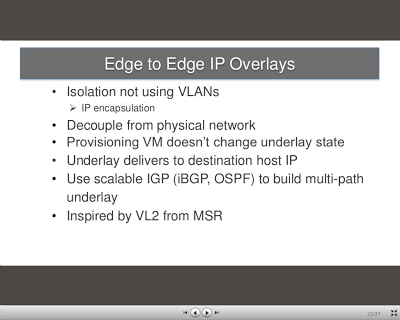Since Openstack Folsom release the source code is tracked on github. The previous releases like Essex, Diablo ... were maintained on
Canonical Launchpad.
https://launchpad.net/nova/essex
https://github.com/openstack/nova
Problem
How to checkout Folsom release
Solution
We start with checking out latest nova code.
git clone git://github.com/openstack/nova.git
Cloning into 'nova'...
remote: Counting objects: 174497, done.
remote: Compressing objects: 100% (40106/40106), done.
remote: Total 174497 (delta 140401), reused 164045 (delta 130984)
Receiving objects: 100% (174497/174497), 116.95 MiB | 2.01 MiB/s, done.
Resolving deltas: 100% (140401/140401), done.
We can see what branches are available.
cd nova
git branch
* master
At first it looks like something went wrong. We can see some tags although.
git tag
0.9.0
2011.1rc1
2011.2
...
To see all the branches (local and remote) we need to use -r or -a options.
git branch -r
origin/HEAD -> origin/master
origin/master
origin/stable/folsom
origin/stable/grizzly
git branch -a
* master
remotes/origin/HEAD -> origin/master
remotes/origin/master
remotes/origin/stable/folsom
remotes/origin/stable/grizzly
When combining with -v we can see the last commits ID. We see that local master is the same as remotes/origin/master.
git branch -v -a
* master e4f05ba Imported Translations from Transifex
remotes/origin/HEAD -> origin/master
remotes/origin/master e4f05ba Imported Translations from Transifex
remotes/origin/stable/folsom 6740c41 Check QCOW2 image size during root disk creation
remotes/origin/stable/grizzly 159fdd2 Merge "Detach volume fails when using multipath iscsi"
We can see more info about the remote branch.
git remote -v show origin
* remote origin
Fetch URL: git://github.com/openstack/nova.git
Push URL: git://github.com/openstack/nova.git
HEAD branch: master
Remote branches:
master tracked
stable/folsom tracked
stable/grizzly tracked
Local branch configured for 'git pull':
master merges with remote master
Local ref configured for 'git push':
master pushes to master (up to date)
To checkout a remote branch we use the standard checkout with -b options.
git checkout -b folsom remotes/origin/stable/folsom
Checking out files: 100% (2510/2510), done.
Branch folsom set up to track remote branch stable/folsom from origin.
Switched to a new branch 'folsom'
git branch -a
* folsom
master
remotes/origin/HEAD -> origin/master
remotes/origin/master
remotes/origin/stable/folsom
remotes/origin/stable/grizzly
git branch -a -v
* folsom 6740c41 Check QCOW2 image size during root disk creation
master e4f05ba Imported Translations from Transifex
remotes/origin/HEAD -> origin/master
remotes/origin/master e4f05ba Imported Translations from Transifex
remotes/origin/stable/folsom 6740c41 Check QCOW2 image size during root disk creation
remotes/origin/stable/grizzly 159fdd2 Merge "Detach volume fails when using multipath iscsi" into stable/grizzly
As you can see it created a new local branch and set the pointer to the remote one. There is another way as well to do the same. We use the Grizzly branch to demonstrate this.
git checkout --track remotes/origin/stable/grizzly
Checking out files: 100% (2355/2355), done.
Branch stable/grizzly set up to track remote branch stable/grizzly from origin.
Switched to a new branch 'stable/grizzly'
git branch -a -v
folsom 6740c41 Check QCOW2 image size during root disk creation
master e4f05ba Imported Translations from Transifex
* stable/grizzly 159fdd2 Merge "Detach volume fails when using multipath iscsi" into stable/grizzly
remotes/origin/HEAD -> origin/master
remotes/origin/master e4f05ba Imported Translations from Transifex
remotes/origin/stable/folsom 6740c41 Check QCOW2 image size during root disk creation
remotes/origin/stable/grizzly 159fdd2 Merge "Detach volume fails when using multipath iscsi" into stable/grizzly
git branch -a
folsom
master
* stable/grizzly
remotes/origin/HEAD -> origin/master
remotes/origin/master
remotes/origin/stable/folsom
remotes/origin/stable/grizzly
Once we are done with the checking out we can always get back to the most up to date and latest code.
git checkout master
Switched to branch 'master'
References
- http://git-scm.com/book/ch3-5.html
- http://stackoverflow.com/questions/9537392/git-fetch-remote-branch






























